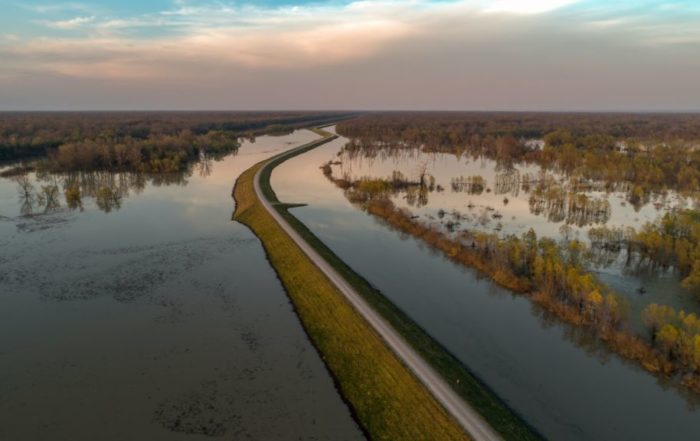For nearly two years, insurers and homeowners have heard that flood risk calculations are about to undergo an overhaul, but little has been known for sure. With the start date for Phase 1 of Risk Rating 2.0 fast approaching, there’s finally more information to share.
In a webinar on June 15th, Carrie Lang shared an overview of what we know about Risk Rating 2.0 today. They covered…
- An overview of the NFIP Today.
- What will change under Risk Rating 2.0: Equity in Action.
- What won’t change under the new risk rating system.
In the months ahead, we’ll continue to provide relevant information and analysis on the NFS blog, but for today, we’ll recap the most important messages from this program.
The National Flood Insurance Program Today
The National Flood Insurance Program (NFIP) currently has 5 million policies and provides $1.3 trillion in coverage in 22,525 communities across the country.
The current legacy methodology for calculating flood risk relies on:
- FEMA-sourced map data
- A list of rating variables
- The property’s flood insurance rate map zone
- Base flood elevation
- Foundation type
- Structural elevation (in Special Flood Hazard Area)
- Frequency of flooding
- Additional fees and surcharges
Under this method, in the past two decades, earned premiums have increased minimally, while loss dollars paid have skyrocketed. So, it’s time to shift from the legacy methodology to an equity in action methodology that more accurately weighs the flood risk of individual properties around the country, rather than relying on outdated flood maps.
What Is Equity in Action and How Will Flood Risk Be Calculated Under Risk Rating 2.0?
When Phase 1 rolls out on October 1, 2021, it will only apply to new business. At that time, we’ll also see a new NFIP flood manual specific to Risk Rating 2.0. Existing policyholders with expirations between October 1, 2021, and March 31, 2022, will be eligible for renewal under the new rating methodology if it will decrease their premium.
When Phase 2 begins on April 1, 2022, all policies will be subject to the new methodology. With the implementation of the new pricing methodology, premium decreases will go into effect at renewal, but increases to full-risk premium will be subject to statutory cap limitations.
The new risk rating methodology will use an algorithm to calculate property risk based on FEMA-sourced map data as well as federal government-sourced data and commercially available third-party data. It will also take into account the cost to rebuild, a broader range of flood frequencies, and the typical fees and surcharges.
While we’ll write more about the potential implications of these changes for property owners soon, for now, we know that the updated risk rating variables include:
- Distance to flooding source and flood type.
- Building occupancy.
- Construction type.
- Foundation type.
- Ground elevation.
- First floor height.
- Number of floors.
- Prior claims.
What’s Going Away with the Arrival of Risk Rating 2.0 and What Will Be Staying the Same
The NFIP is doing away with grandfathering, flood zones and elevation certificates will no longer be required for rating, and Submit for Rate will no longer be used. They are also retiring certain policies, including…
- Preferred Risk Policies
- Mortgage Portfolio Protection Program
On the flip side, many features of the legacy methodology are not going away:
- The Mandatory Purchase Requirement will still apply to properties in Special Flood Hazard Areas (SFHAs). Notably, flood insurance rate maps will continue to be used to help determine SFHAs, although they no longer impact the rate calculation, as mentioned above.
- Floodplain management rules have not changed. Community compliance, LOMAs, and LOMRs still exist.
- Statutory caps on annual and individual rate increases still restrict most to an 18 percent increase per year.
- Building and contents eligibility still applies.
- Increased cost of compliance (ICC) rules still apply.
- Underwriting forms. The application, general change endorsement, and cancellation forms will still be used the same way they are today, although these forms will be updated under Risk Rating 2.0. The dwelling, general property, and RCBAP forms are not slated to change.
- Assignment of a policy to a new building owner. Policies can still be assigned to new building owners.
Stay Up-to-Date on Risk Rating 2.0
This summer, we’ll continue to update our blog and agent resources as we learn more about this new methodology for calculating flood risk.
If you have any questions in the lead-up to October 1, contact our team for assistance.









